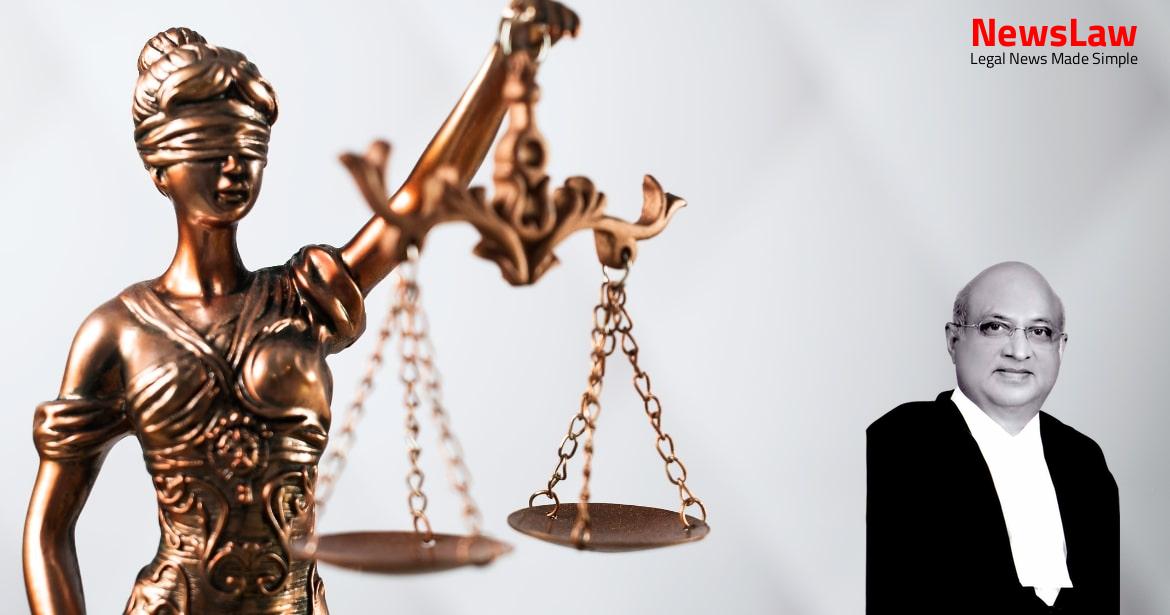Explore the detailed legal analysis conducted by the court in a recent case concerning reservation norms compliance. The case dives into the nuances of reservation percentages for different categories and scrutinizes the applicability of legislative amendments in ensuring equitable representation. Stay tuned to unravel the complexities of reservation laws and the court’s meticulous examination of the legal framework.
Facts
- Section 4(a) was omitted and sub-sections (1) and (2) of Section 5 were amended.
- Reservation norms for SC, ST, and OBC categories were specified for the academic year 2014-15 by respondent No. 1 – University.
- The Manipur University Act of 2005 converted respondent No. 1 – University from a ‘State University’ to a ‘Central University’.
- The Reservation Act was notified on 04 January, 2007.
- The Amendment Act in 2012 required respondent No. 1 – Manipur University to follow reservation norms for SC, ST, and OBC categories.
- Rules related to admission and reservation of seats were stipulated in Ordinance 5.2 and 5.4 by respondent No. 1 – University in 2014.
- The appellants challenged the High Court judgment of 21 August, 2017, regarding reservation norms and filed Writ Appeal No. 40 of 2015.
- The appellants, SC category candidates, challenged the reduction of SC quota from 15% to 2% for admission in Post Graduate courses.
- High Court of Manipur initially adopted the percentages of reservation for SC, ST, and OBC categories as 2%, 31%, and 17% respectively for the University.
- The matter was transferred to the High Court of Meghalaya and remanded back to Manipur for reconsideration in light of the Reservation Act provisions and University ordinances.
- The impugned judgment dated 21 August, 2017 was passed by the High Court of Manipur after remand, where the question of applicability of the proviso inserted via the Amendment Act was raised.
- The High Court did not delve into the actual calculation of reserved seats but focused on determining the principles for calculating the reservation percentages.
Also Read: Time as Essence of Contract in Sale Agreement: Legal Analysis
Arguments
- The learned counsel for the appellants argues that the Amendment Act was enacted to ensure that reservation for SC and ST candidates is not reduced from the benchmark of 15% and 7.5% respectively.
- The Amendment Act allows for an increase in the percentage of reservation for SC and ST candidates, even at the expense of the reservation percentage for OBC candidates, to maintain the overall 50% reservation limit for SC and ST candidates combined.
- The respondent No. 1 – University, being a Central University, is subject to the Rules and Regulations of the Central Government, including the Reservation Act.
- After the enactment of the Amendment Act, the University adjusted its reservation policy to reserve 2% seats for SCs, 31% for STs, and 17% for OBCs, in compliance with the proviso of Section 3 post-amendment.
- The Union of India supported the findings that the percentages of reservation for SC, ST, and OBC candidates were correctly set at 2%, 31%, and 17% respectively, based on the situation preceding the commencement of the Reservation Act.
- The Amendment Act was introduced to rectify the anomaly in Section 3 of the Reservation Act, considering the substantial tribal population in states like Manipur.
- Reservation for SC and ST candidates should not be reduced below the levels specified before the Reservation Act, 2006 or after its enactment.
- Reservation for SC candidates should not be less than 15% and for ST candidates should not be less than 7.5%.
- The requirement that reservation for SC and ST candidates should not be reduced applies to Central Education Institutions in specified North Eastern Regions.
- The reduction of seats reserved for SC candidates in the respondent No 1 – University goes against the Reservation Act’s mandate.
- The Amendment Act allows for the reduction of reservation for OBC category candidates to ensure overall reservation remains constant.
- Providing only 2% reservation to SC candidates by the respondent No 1 – University does not comply with the mandates of Section 3 of the Parent Act.
Also Read: Retirement Age of PTI/Sports Officer in University
Analysis
- The respondent No 1 – University correctly calculated the extent of reservation of seats for different categories in line with the Amendment Act.
- The University followed the reservation policy as prescribed in Section 3 of the Reservation Act.
- The Amendment Act aimed to resolve difficulties faced by Central Educational Institutions in implementing reservation laws, especially in North Eastern States.
- The Amendment Act enforced specific reservation percentages for SC, ST, and OBC candidates, considering regional demographics.
- Reports and recommendations preceding the Amendment Act provided insights into the background and intentions behind the legislative changes.
- The Second Proviso in Section 3 of the Parent Act imposed restrictions on the total percentage of seats reserved for OBC candidates in certain situations.
- The Amendment Act amended reservation norms in Central Educational Institutions (CEIs) from the year 2012 by introducing provisos to Section 3 of the Parent Act.
- The University reverted to the percentage reservation policy prevalent before the Reservation Act’s commencement for ST, SC, and OBC candidates.
- The Standing Committee acknowledged practical difficulties faced by CEIs and proposed amendments to ensure reservation percentages as per the Amendment Act.
- The general rules of reservation are encapsulated in Clauses (i), (ii), and (iii) of Section 3 of the Parent Act.
- The formulae for fixing the percentage of reservation for SC, ST, and OBC candidates must be gathered from the same source to avoid uncertainty.
- The reference point for determining the reservation quota for OBC candidates must be the same as that for SC and ST candidates.
- For CEIs in ‘Specified north eastern region’, the new provisos appended to Section 3 govern reservation norms, regardless of being in areas covered by the Sixth Schedule.
- Determining reservation percentage for OBC candidates requires calculating the difference between 50% of annual permitted strength and the existing percentage for SC and ST candidates.
- Interpretation of the second proviso in Section 3 post-amendment must align with the overall context and purpose of the Reservation Act.
Decision
- The respondent No. 1 – University had to follow the reservation norms of 2% for SC candidates, 31% for ST candidates, and 17% for OBC candidates.
- These reservation norms are in accordance with the second proviso to Section 3 of the Reservation Act inserted by virtue of the Amendment Act.
Case Title: KSHETRIMAYUM MAHESHKUMAR SINGH Vs. THE MANIPUR UNIVERSITY (2022 INSC 16)
Case Number: C.A. No.-000163-000163 / 2022



